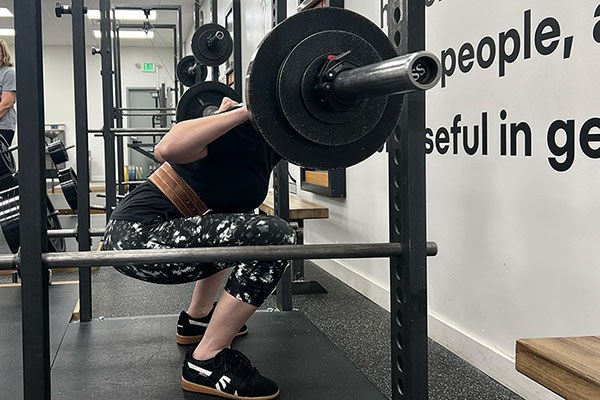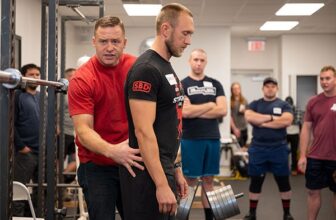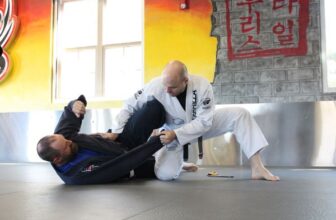
[adinserter block=”2″]
The more weight you can squat
to the correct depth, the stronger you are. It really is that simple.
But when is a “squat” not a squat? When it is not below parallel
– at the proper depth and therefore the proper range of motion to
satisfy the purpose of the exercise. Partial squats are not squats
because they do not work the maximum possible muscle mass through the
longest effective range of motion, thus increasing strength.
We
are not concerned with aesthetics, which focuses on hypertrophy, thin
skin, low bodyfat, and pleasing proportions, most of which are
genetic and outside the purview of training. Nor are we concerned
with competitive powerlifting, which is unconcerned with squat depth,
as YouTube will show you. We are concerned with strength, which is
best produced with sets of 5 reps squatted to a position just below
parallel. This is the position of maximum muscle mass involvement
while generating the most force production.
Both
of these factors must be considered when deciding how to best squat
for strength training. The old powerlifting people got the depth
correct, but the equipment manufacturers came into control of the
sport many years ago, and half-squats in supportive gear sold more
supportive gear.
The
depth of a squat designed for a strength increase is critical,
because range of motion left out of the movement cannot be
strengthened by the movement, and likewise a range of motion that is
anatomically inefficient at producing the most force cannot
contribute to the heaviest possible efficient squat.
Heavier
weights are possible with quarter squats because of the leverage
advantages of more-open knee and hip angles, and the very important
fact that far less work – in the Force x Distance
sense – is being done. A squat that stops at 6 inches above
parallel leaves out the muscle mass that operates knee extension and
hip extension at lower depths.
On
the other hand, nobody squats as much weight ass-to-grass as they do
either high or just below parallel, because that excessive depth
requires a relaxation of the quads, the glutes, and the low back in
order to assume the position. Relaxed muscle is not producing force,
and is therefore not getting stronger.
Another
factor involved in the squat is the “stretch reflex” effect
produced by the eccentrically-loaded muscle mass at the bottom of the
range of motion, just below parallel. The lengthening muscle fibers
under tension act as a signal for increased recruitment of more force
from the now-shortening fibers acting concentrically as the squat
moves back up. This is the difference between a squat paused on a box
and an actual squat, with this neuromuscular “amplifier” making a
big difference in the weight. The depth is a factor, because if the
stretch is excessive the stretch reflex is inefficient.
And
depth itself is dependent on several variables, flexibility being
probably the least important. Joint angles and limb segment positions
are the determining factor in depth, as illustrated by this example:
if your knees continue to slide forward, is it possible to get your
hips below them? No, because you can slide your knees forward to the
ground in front of your toes, and your hips will obviously still be
above your knees. Don’t rely on your perception of knee travel to
indicate depth, because it doesn’t. Don’t confuse bar travel with
depth, because you can goodmorning the bar to below your knees with
your hips far above parallel. Vertical hip travel determines depth,
and that is all.
The
most efficient position for depth is shins just forward of vertical,
with feet at about 30 degrees out from straight-forward and thighs
parallel to the feet, which requires knees to be out more than most
people want them. This frees the hips to drop below the knees,
produce the stretch reflex in the glutes, adductors, hamstrings,
quads, and all the hip musculature, and rebound the loaded lifter
back to the top. The depth is critical for a rebound, and a squat
rebounding from the correct depth is actually easier than a squat cut
off an inch above parallel.
Some
external factors can adversely affect your depth. If you are wearing
full-length sweats that do not stretch easily – or even tight
shorts that resist hip flexion by grabbing your thighs – they can
bind your hips and knees as you approach the actual bottom position
you need. At the very least, they can give you incorrect feedback
about your depth, causing you to believe that you have hit the bottom
when you haven’t. In the same way, a 4-inch belt can jam into the top
of your thighs before you are actually deep. Most people should be
wearing a 3-inch belt.
If
you squat in running shoes, you are not stable against the floor,
varying amounts of force get applied between varying places on your
feet each rep, and depth is really hard to reach when you’re trying
like hell to not fall over. Get some decent lifting shoes.
So
the most efficient squat for strength training must be deep enough,
but not too deep. The Sweet Spot is just below parallel – the apex
of the crease/fold at the hip just below the level of the top of the
patella. Squatting any other way does not produce the best strength
adaptation, even if it does provide a profound sense of
accomplishment.
Spotting
correct depth visually can be difficult. If you are standing in the
wrong place, looking from the wrong angle, if the rack is in the way,
if the lifter has on too many clothes, if his back is not in good
extension, or if anything else interferes with your ability to
accurately judge depth, you need to change something immediately so
as not to lose too many reps. Move to a better point of vantage as
soon as you realize you can’t see the depth clearly, so your lifter
can perform more of the reps correctly with your coaching.
The
same rule holds for filming your own workouts: watch all your warmup
sets to make sure the camera placement is optimum for the work sets.
Watch the reps in slow-motion or frame-by-frame, and learn to see the
knee angles and the hip angles, the back angle and back extension,
and what your feet are doing during the reps (they should be doing
nothing at all
except nailing you to the floor). And even if you have a coach, watch
them all anyway – coaches can be wrong, and it’s your work and
therefore your responsibility.
Learn
to see correct depth when you are coaching, and especially when
reviewing your own videos. Do not lie to yourself about depth,
because that compromises your training and your honesty.
Discuss in Forums
[adinserter block=”2″]
Credit : Source Post






